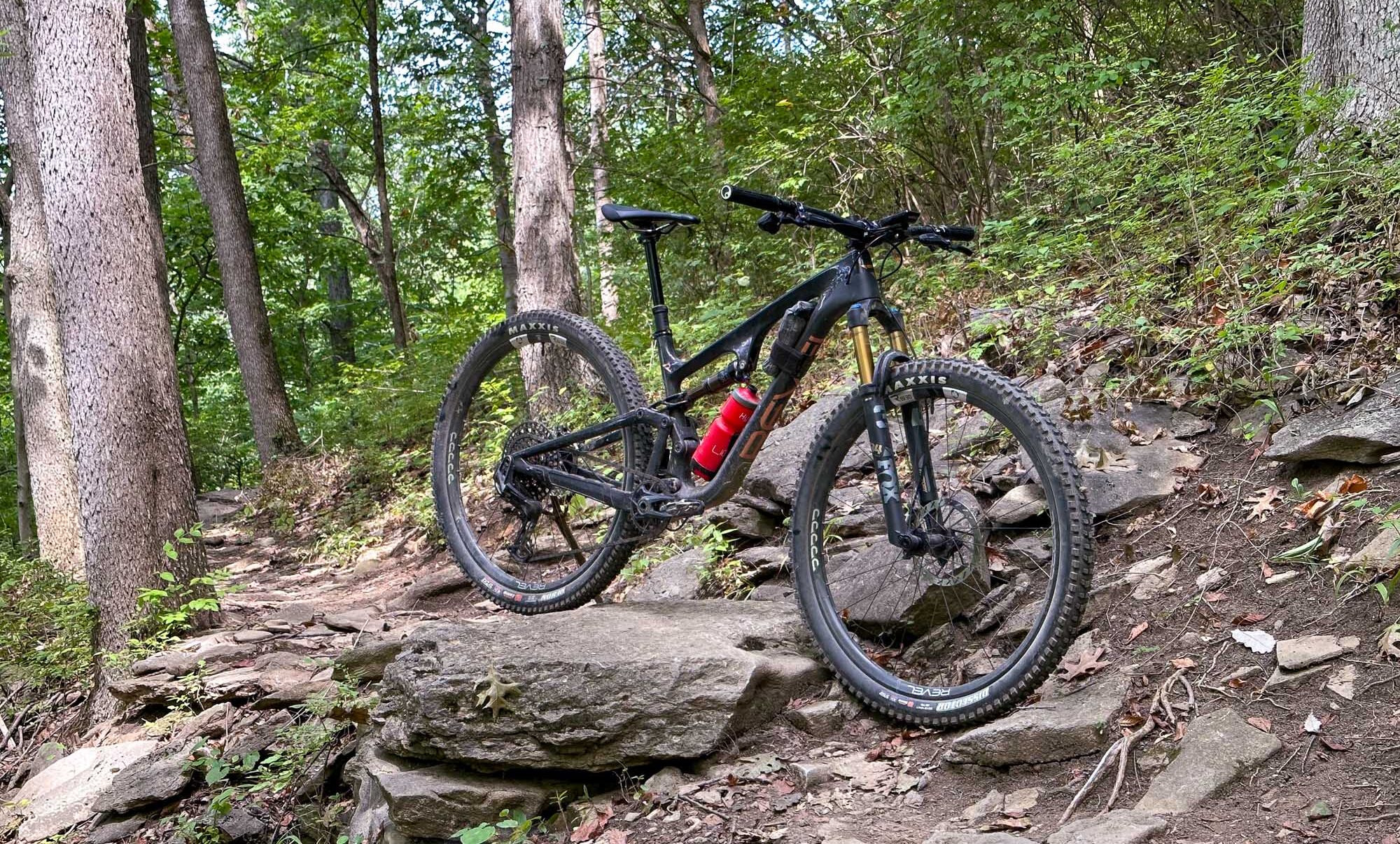It’s not often that I find myself on a new version of a bike I just reviewed two years ago. But that’s exactly where I found myself with the Revel Ranger v2. After launching in 2020, I wrapped up my (extended) review in 2021. Now, here we are in 2023 with a new version of the Ranger. Naturally, I wanted to test it out.
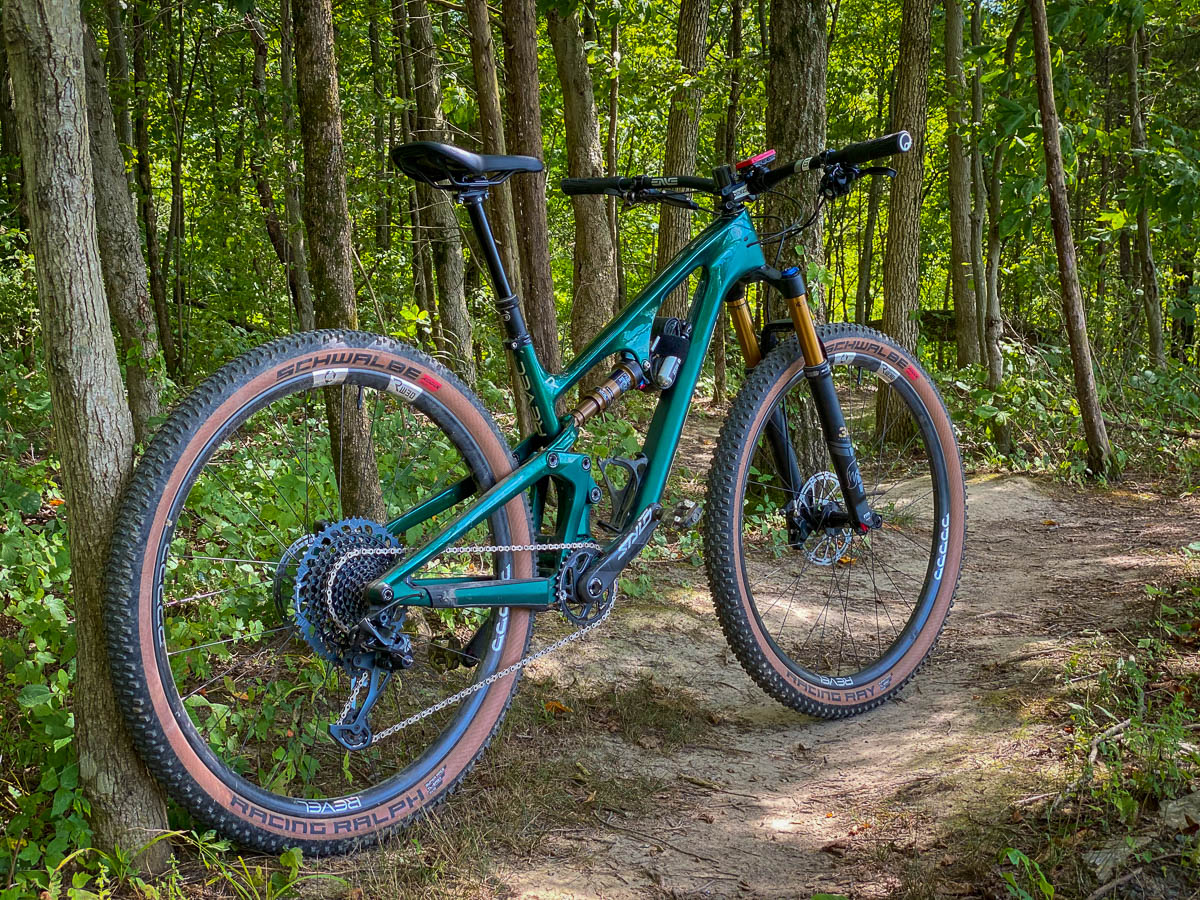
I loved the original Ranger, but there were a few things that could be improved. If you care about having the latest drivetrain options, that included the need for a SRAM UDH. You can’t just add SRAM UDH compatibility to an existing rear triangle (for most bikes), so that sent Revel back to the drawing board to come up with a new frame member. Revel also revised shock mounting hardware and added a collet axle with larger bearings for the lower-rear suspension pivot. The result is an increase in stiffness you can really feel on the trail.

Sure, you can run the latest SRAM Transmissions on the new bike, but the real upgrade comes from the increased snap from the back end. The Ranger still has the ability to outrun its brakes when things get rowdy, but now it feels like the fast, short travel bike it should when you’re mashing the pedals. Ranger v2 is still just as capable when the trail points down, only now, it crushes the climbs as well.

That new swingarm also includes increased tire clearance (though still labeled as 29 x 2.6″), and a new mini-fender debris guard at the lower pivot. That mini-fender does a solid job of keeping bigger debris from getting stuck in the lower suspension links and is a welcomed addition. The tire clearance is also exceptional – most riders won’t ever use a 2.6″ tire on this bike, but you could. More importantly, that extra clearance really helps when things get muddy.

While Revel didn’t specify any changes to the front triangle, I’ve found that it’s even easier to run a full-size 26oz Specialized Purist bottle inside the front triangle with a side-load cage.
An Inauspicious Start
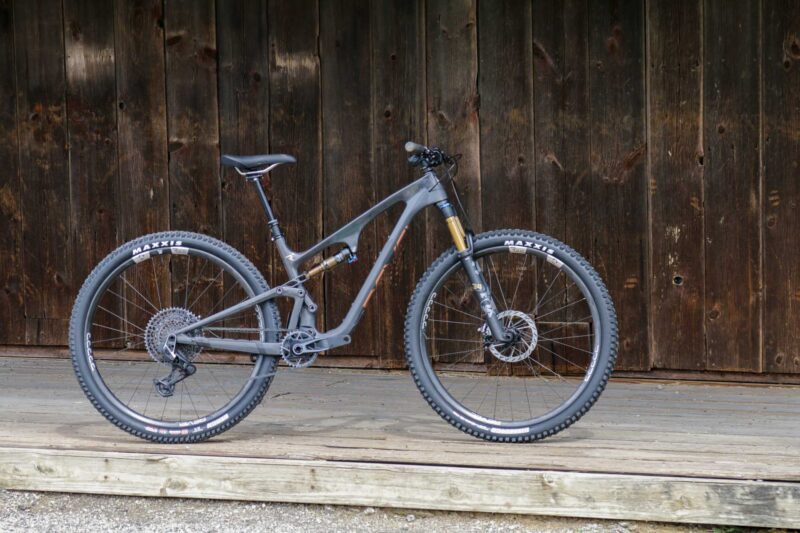
Based on my initial experience with the Revel, I thought this particular bike may be cursed. After the initial sample showed up with the wrong drivetrain, I swapped it for one that was fitted with SRAM X0 Transmission. Then, I found that the RockShox SID fork had issues out of the box. The fork wouldn’t compress properly as if it was hydro-locked, and the fastest way to get me riding was for Revel to send the only spare suspension kit they had – a Fox 34 Step-Cast fork and a matching Float DPS shock.
Suspension issues sorted, I set out for the trails and started dialing in the bike. Soon after, I started having issues with the SRAM Transmission. We’re still new to troubleshooting this drivetrain like anyone, and on a derailleur without most of the adjustments you’re used to, it can be tough to figure out what’s going on mid-ride.
My best guess is that the Full Mount Bolt on the derailleur wasn’t properly torqued from the assembly, and the derailleur was slowly slipping forward on the mount. By hand, the derailleur felt tight, but admittedly I didn’t bust out the torque wrench to verify that it was torqued to 35Nm before riding it (some bolts were originally printed with 25Nm, but 35Nm is the correct spec). Let that be a lesson to anyone with a new Transmission setup – even if you got it from a bike shop or direct from the manufacturer, make sure the bolt is properly greased and torqued before riding it.
As a result of the derailleur likely gradually slipping from the mount, the shifting slowly became erratic. What initially felt like something that could be fixed with the micro adjust feature turned into the derailleur starting to rub on the cassette when shifting to the biggest cogs. This all happened over the course of a long ride and by the time I had returned (early) to the trailhead, the damage had been done. I had tried to tighten the derailleur with the multi-tool I had on hand during the ride, but the mini 8mm Allen on the tool made it difficult to generate enough torque (keep that in mind if you have a Transmission derailleur, carry a big 8mm). On the trailside, it felt tight, but in reality, the bolt was probably under-torqued. I found out that it was also not greased during assembly, which could have added to the issue.
After discussing the issue with SRAM, they sent out a replacement chain, cassette, and derailleur stating that this is the same experience that they would offer to any customer that may have similar issues with a new drivetrain. SRAM has always had the best customer service in the industry, and it’s no different here.
After receiving the new parts and installing them by the book, I haven’t had a single issue since.


Well, there was one thing, but it’s hardly the fault of the drivetrain. Remember when I said I thought this bike may be cursed? On the first ride out on the new Transmission parts, a stealth ball of fishing line found its way into the derailleur before I made it 20 yards out of the parking lot. Before I even saw it, it was wrapped up in everything. I had to carry the bike back to the car, remove the derailleur pulleys, and use a knife to painstakingly cut out a massive amount of line (anglers – don’t litter parks with discarded fishing line, please).
Once I had the Transmission freed, it was like a veil had been lifted and the Ranger was flawless from that point on. I’m glad that I persisted as the Ranger V2 has delivered some of my best rides of the summer. On it, I’ve repeatedly bested some of my PRs on challenging trails, and while it’s just as happy on old-school XC tracks, I keep finding myself headed to more challenging and fun trails with the bike.
Components
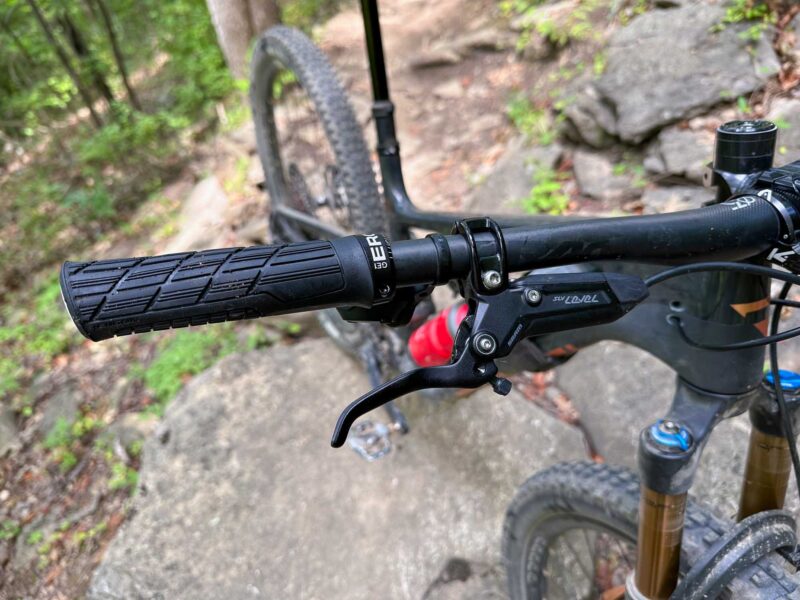

At this point, it’s cliche to say that the bike can outride the travel numbers, but the Ranger absolutely can. It also may outride the brakes. That’s the case here with the SRAM Level Silver Stealth brakes included on the build. The Ranger gives you the confidence to tackle just about any terrain, but the brakes can feel a bit underwhelming at times. Something with increased stopping power would be very welcome here for more aggressive riders.
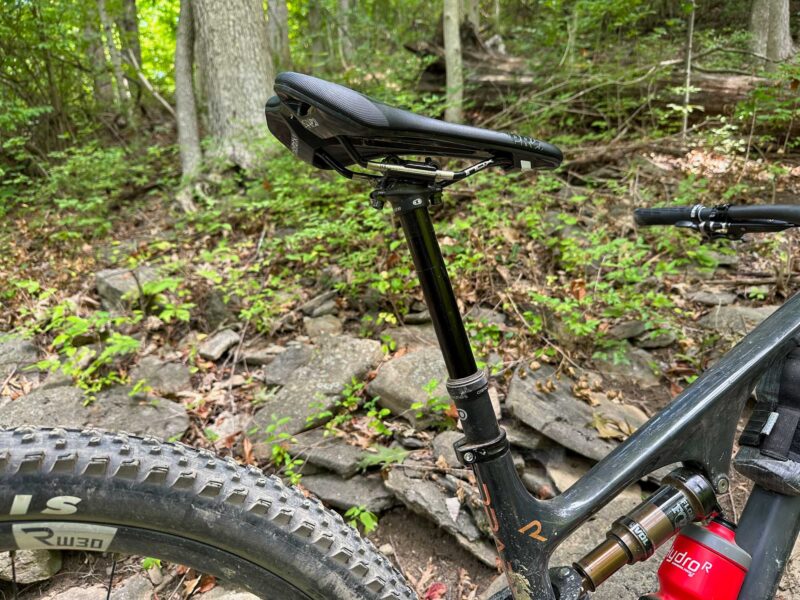


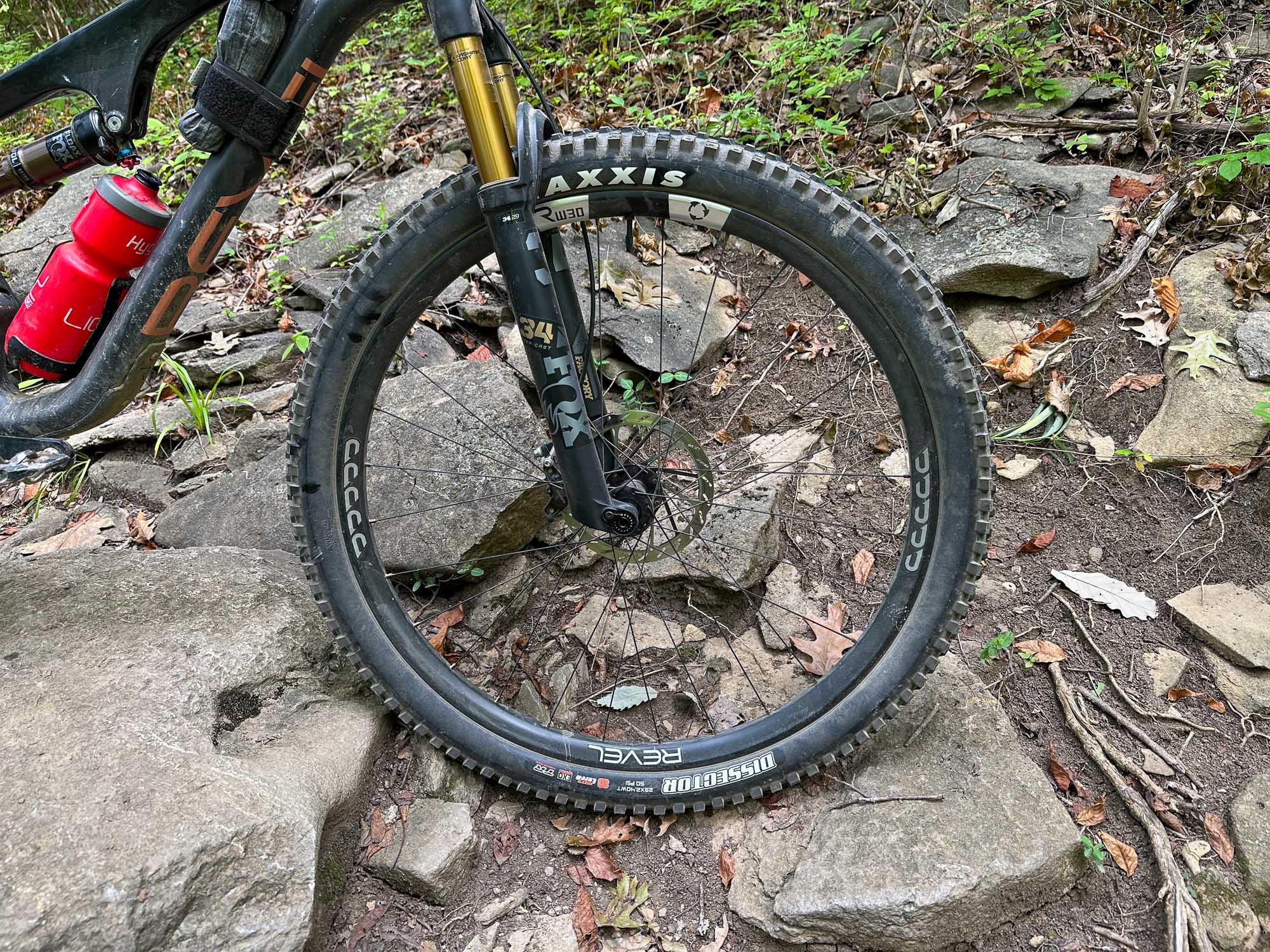
Other spec highlights include a 150mm travel CrankBrothers Highline 7 dropper post which continues to be smooth, easy to operate, and free of any excess play. The stock WTB Volt saddle was too squishy for my liking, but riders who prefer a softer ride may enjoy it. I also swapped out the Lizard Skins Charger Evo grips for my preferred Ergon GE1 grips. The stock SRAM X0 Eagle Transmission build includes a set of Industry Nine Trail S rims with I9 1/1 hubs – the Revel RW30 carbon rims with I9 Hydra hubs shown here are a $1,200 option. A very tempting option, as the wheels yield a great ride quality and seem to be quite durable.
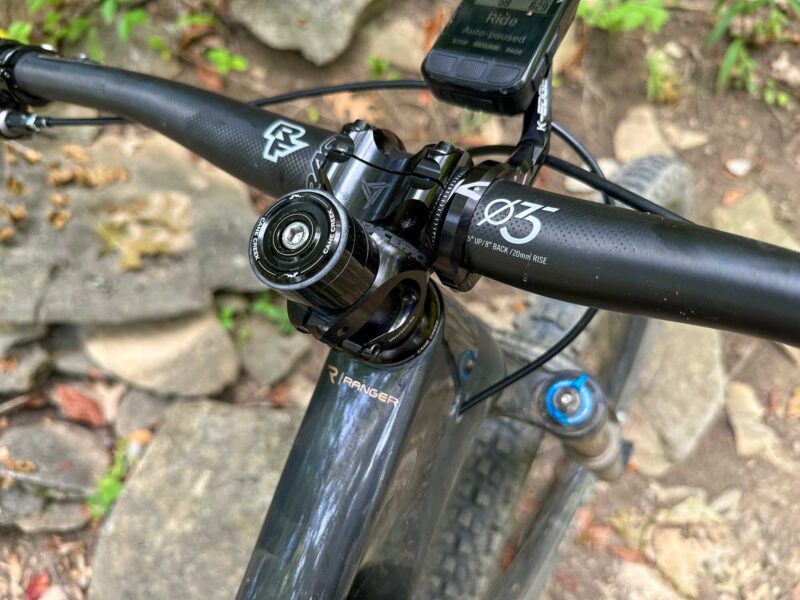
A 40mm Raceface Aeffect R stem and 780mm bar with a 35mm clamp diameter felt right at home on the Ranger.

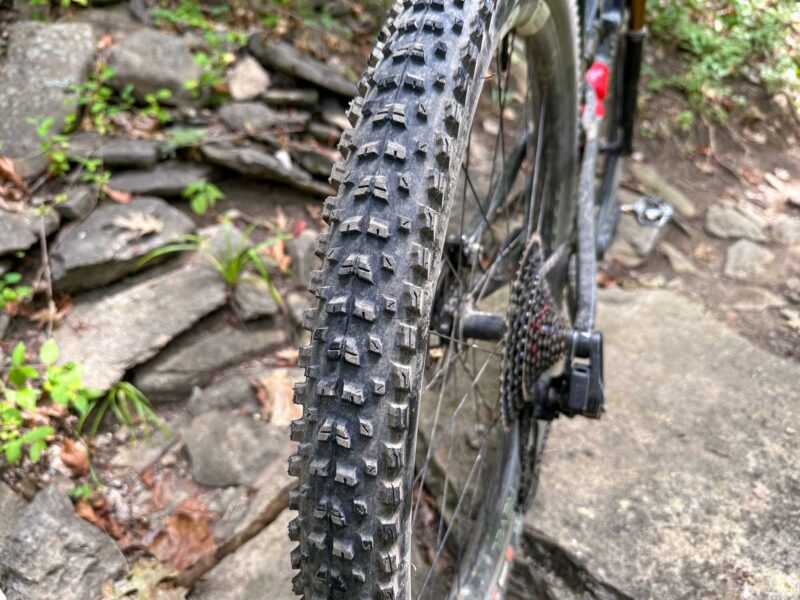
It’s been wetter with softer trails this time around, and I’ve had a much better experience with the Maxxis Dissector front tire. The Rekon is a solid rear tire, proving grip in most circumstances, and both tires are 29 x 2.4″ with EXO casing.
Actual Weight
In terms of the actual weight, the Ranger V2 weighs 27.51 lbs with 2oz of sealant in each tire. That seems respectable for the category, though this bike is running the upgraded Revel RW30 carbon wheels.
On Bike Storage?
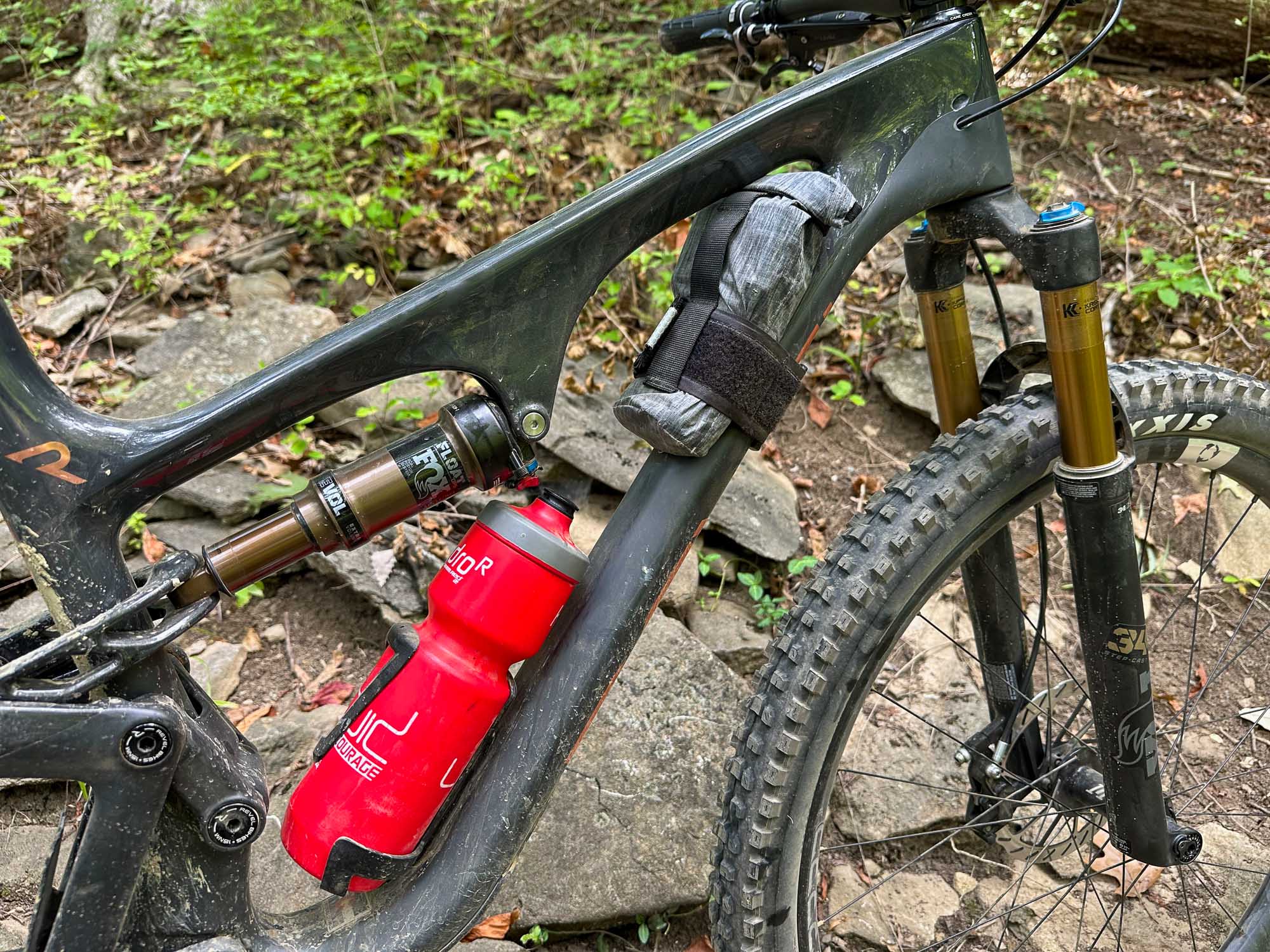
We’re getting to the point where even some road and gravel bikes have built-in storage compartments, so it’s not out of the question to expect it here. While the Ranger doesn’t have any internal storage cubbies, there is an extra set of braze-ons above the main bottle cage mount which could be useful to stash tools and/or gear.
I ended up using the space for a Wolf Tooth B-RAD roll-top bag with the velcro strap mounting method. For me, this is one of the easiest ways to transfer my kit from bike to bike, and the strap keeps it nice and tight during the ride without rubbing on my knees.
Suspension Performance

Like the other Revel bikes that I’ve ridden, the Ranger V2 makes great use of the Canfield Balance Formula suspension system. Even on a lightweight bike like the Ranger, CBF provides a very efficient ride with a suspension curve that feels nearly bottomless when it gets rough. On most of my rides, I kept the Fox DPS shock in the fully open #1 position. Every now and then I would run it in trail mode #1, while the firm setting was only used when riding on pavement.
Ranger V2 Details
- 115mm rear travel
- 120mm front travel
- 29″ wheels
- Thermoset carbon fiber frame
- Canfield Balance Formula suspension system
- Price as tested: $7,999 + $1,200 for the RW30 Carbon I9 Hydra wheel set ($9,199 total)
Geometry
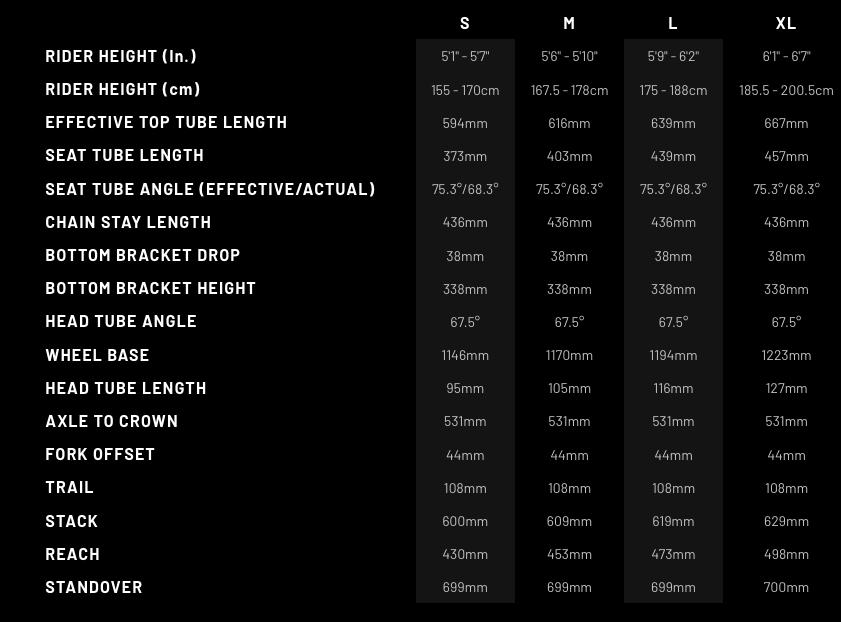
Perhaps more than any other bike category, “downcountry” bikes are still a bit of the Wild West when it comes to geometry. That could be a good thing depending on where you live and how you like to ride. Compared to something like the Santa Cruz Tallboy, the Ranger V2 is somewhat conservative with a head tube angle that’s 2º steeper, and a seat tube angle that’s more than 1º slacker.
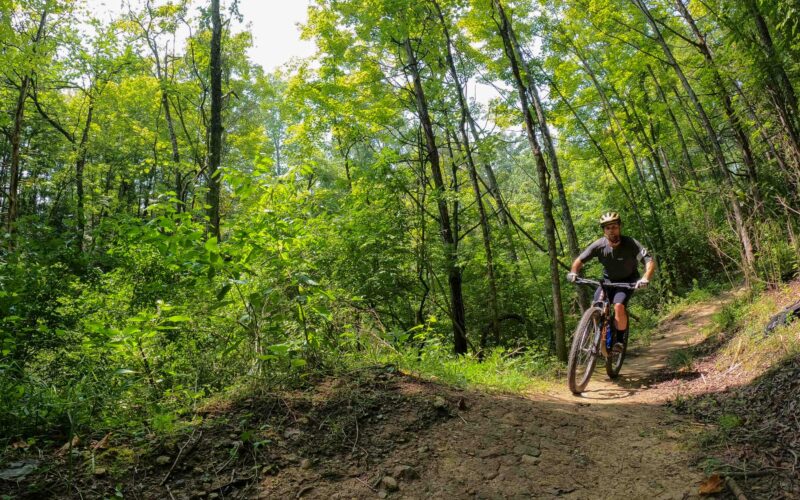
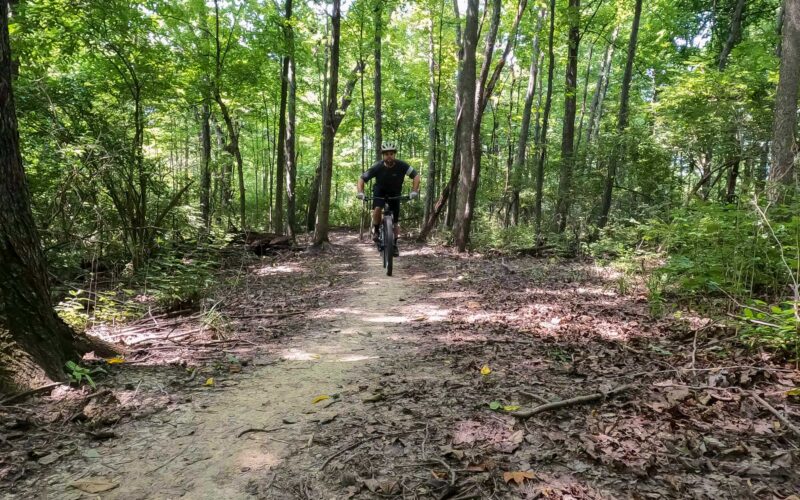
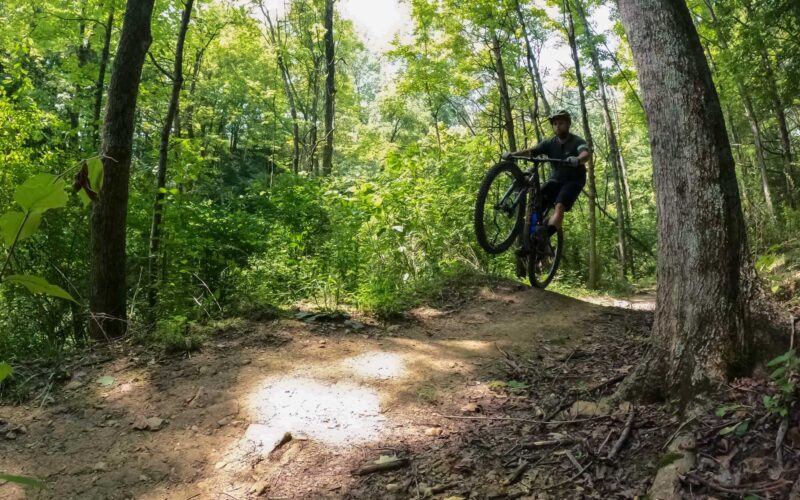
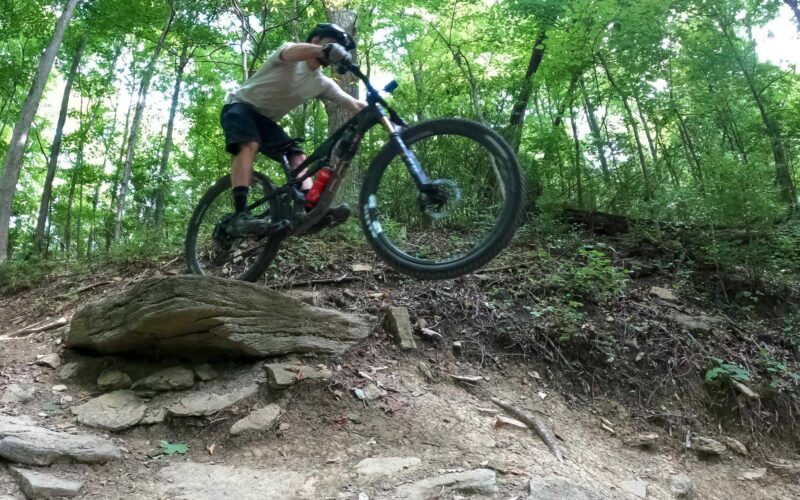
There were times that I felt the bike could use a 1 or 2º slacker head tube angle, but I think many riders will find the Ranger’s geometry comforting – especially those who think modern bikes might be getting a little too slack up front. The current geometry makes it a great option for modern trails without losing its edge on old-school singletrack.
At 5′ 8″, I was right at home on the medium frame, which also has an average reach number for the category at 453mm.
Pros & Cons
Pros
- New frame is notably stiffer & feels faster
- Fits a full-size water bottle under the shock with additional room for tools & gear above
- SRAM UDH
- Moderate “downcountry” geometry provides a less aggressive option compared to other bikes
Cons
- No internal storage
- Not as aggressive as some other “downcountry” bikes, if that’s your goal
Riding Home

The Revel Ranger v1 had already set a pretty high bar. It was a fun bike that had the ability to keep up with many other bikes and riders in varied terrain. The Ranger v2 is that as well, but it received the perfect upgrades to make it even more of a contender. Ranger v2 is just as capable as ever, but it’s faster and feels more laser-focused whether carving lines through singletrack or hunting down a technical KOM. Now with the ability to run SRAM Transmission, regardless of the drivetrain you choose, the Ranger is ready.
For more tech details on the Ranger V2, check out our first post here.
